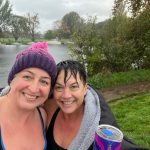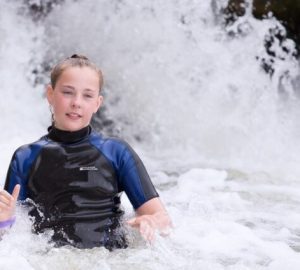An Impossibly Beautiful Adventure
In October 2016, Sarah Thomas made history when she swam the length of Lake Powell from Utah to Arizona. Her 56 hour 5 minute swim, later verified by the Marathon Swimmers Federation at 80 miles, broke the record for the longest unassisted solo open water swim. The 34-year-old recruiter from Colorado already had an impressive number of long distance swims on her CV. In 2010 she decided to up her distance from 10km and successfully crossed the Catalina Channel. In 2011 she completed the Manhattan Island Marathon Swim, swiftly followed by the English Channel in 2012, a double Tahoe (42 miles) and double Memphremagog (50 miles) in 2013, and Flathead Lake and Loch Ness in 2015. Read on to find out what makes the mind of a marathon swimming superstar tick…
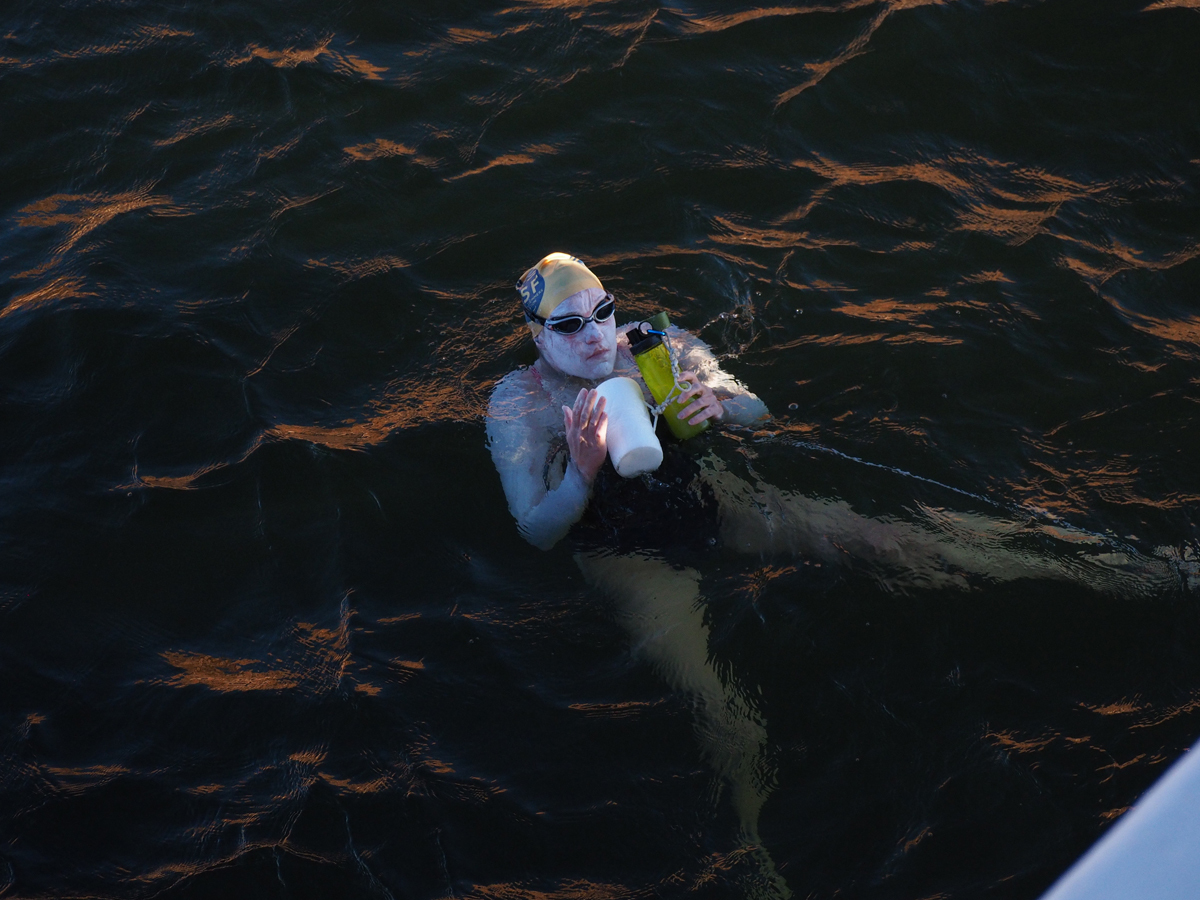
What inspired you to swim so far and for so long?
I’d swum 50 miles in 2013, so I felt like adding another 30 was doable. I figured it was worth a shot!
What fuels your desire for extreme challenges?
I love adventure and swimming in places and routes that haven’t been done ever before or at least not often.
What was your high point of the swim?
Daybreak on the third day. I knew that if I’d made it that far, my arms could fall off and we were still going to make it. After that point, all my stress and fear went away and I was able to enjoy the swim after that.
What was your low point of the swim?
Hour 30 – about 3 pm on Wednesday. We’d been facing tough headwind since the sun came up. It was choppy and I had been cold for a while. I didn’t want to keep swimming because I was so miserable.
How do you deal with mental lows while marathon swimming?
I really rely on my crew for support and encouragement. They did a good job of reminding me to just take it one feed at a time, instead of thinking 24 hours ahead.
How important were your crew to your success?
Crucial. I wouldn’t have made this swim without every single one of them. I was lucky to have had such awesome family and friends on board who knew exactly what I needed at every point along the way.
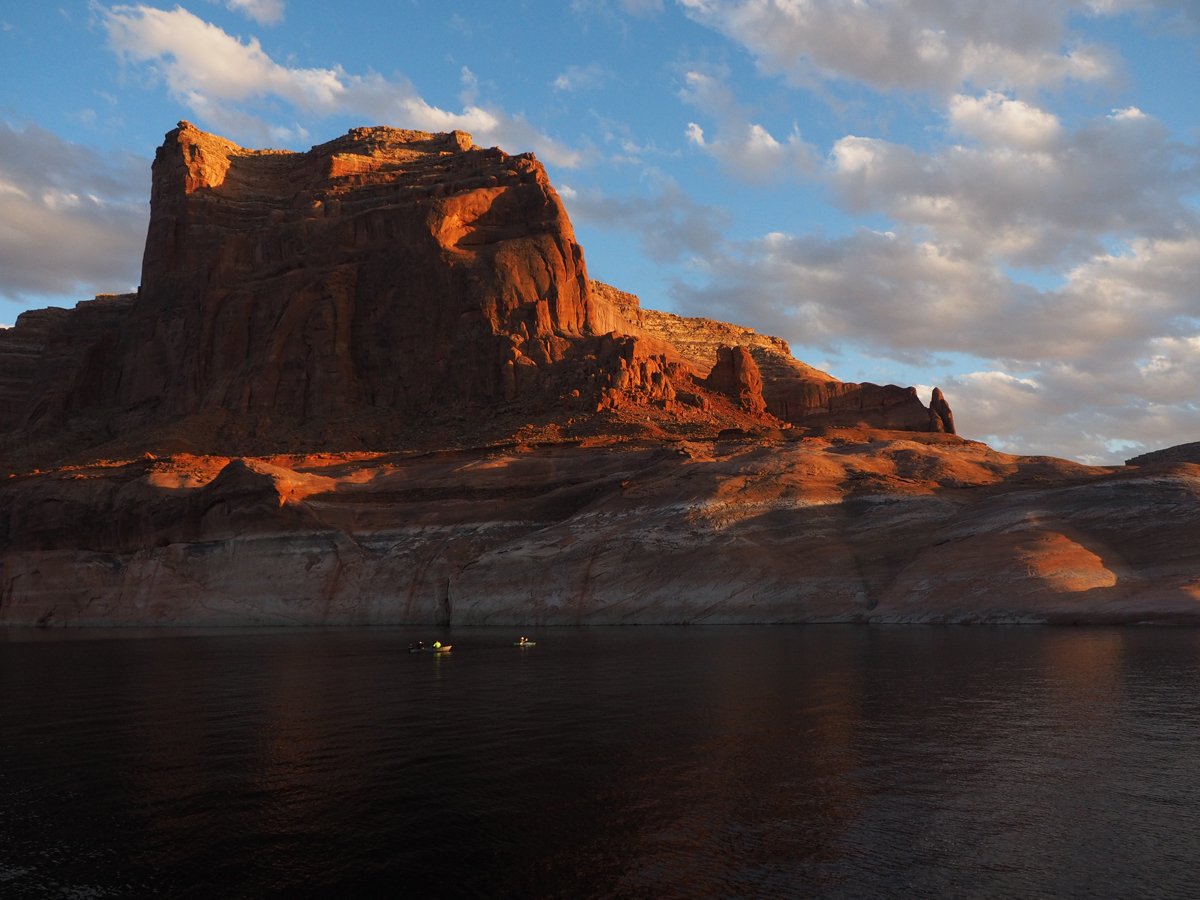
What did your training schedule look like? My training schedule was brutal. Last winter, I knew I was going to attempt a long swim, so I only took a brief break after Loch Ness in August 2015 and made sure to maintain a pretty consistent swim schedule through the winter. I wasn’t swimming a ton of yards, but I was sure to get in the pool at least 4-5 times/week for at least 5000 yards. In March, I started to really turn up the yardage and built my way up. In August, I was averaging about 80,000 metres/week, with a high of 93,000.
Did you manage to avoid injury while training and, if so, how?
I did avoid injury. I do think I’m lucky in that I haven’t had any major shoulder injuries. I credit good genetics! During my training, I was sure to allow recovery time when needed. If my body was telling me to back off, I did.
Was it a problem fitting in training with work and family life?
It was really hard to fit it all in. I’m lucky that my husband is very supportive. He picked up the slack in taking care of the dogs and making dinner. I’m also lucky in that I get to work from home. It’s still a full time, demanding position, but working from home saves me about 2-3 hours/day in driving to/from work, which I was able to reallocate to swimming. Also, I was able to start work earlier in the day to finish earlier to give me adequate time in the evenings. My life was very scheduled, especially during the summer, but I managed to fit it all in. If I knew I had a weekend commitment with friends, I’d make sure to adjust my training schedule to make it work.
What do you think about when swimming for 56 hours?
A combination of everything you could imagine and a whole lot of nothing. The best times are when you get into a meditative state of mind and the 30 minute feeds slip by like nothing. It’s hard when you’re thinking about your family, or work, or how much your arms hurt, or how cold you are. I try to avoid that and just focus on the moment.
Did you suffer from hallucinations during the swim?
I did not suffer from hallucinations. I’d been expecting them and was as prepared as I could be. I talked to a Navy Seal and a few others on their experiences and strategies on how to deal with them. Fortunately, it was a non-issue.
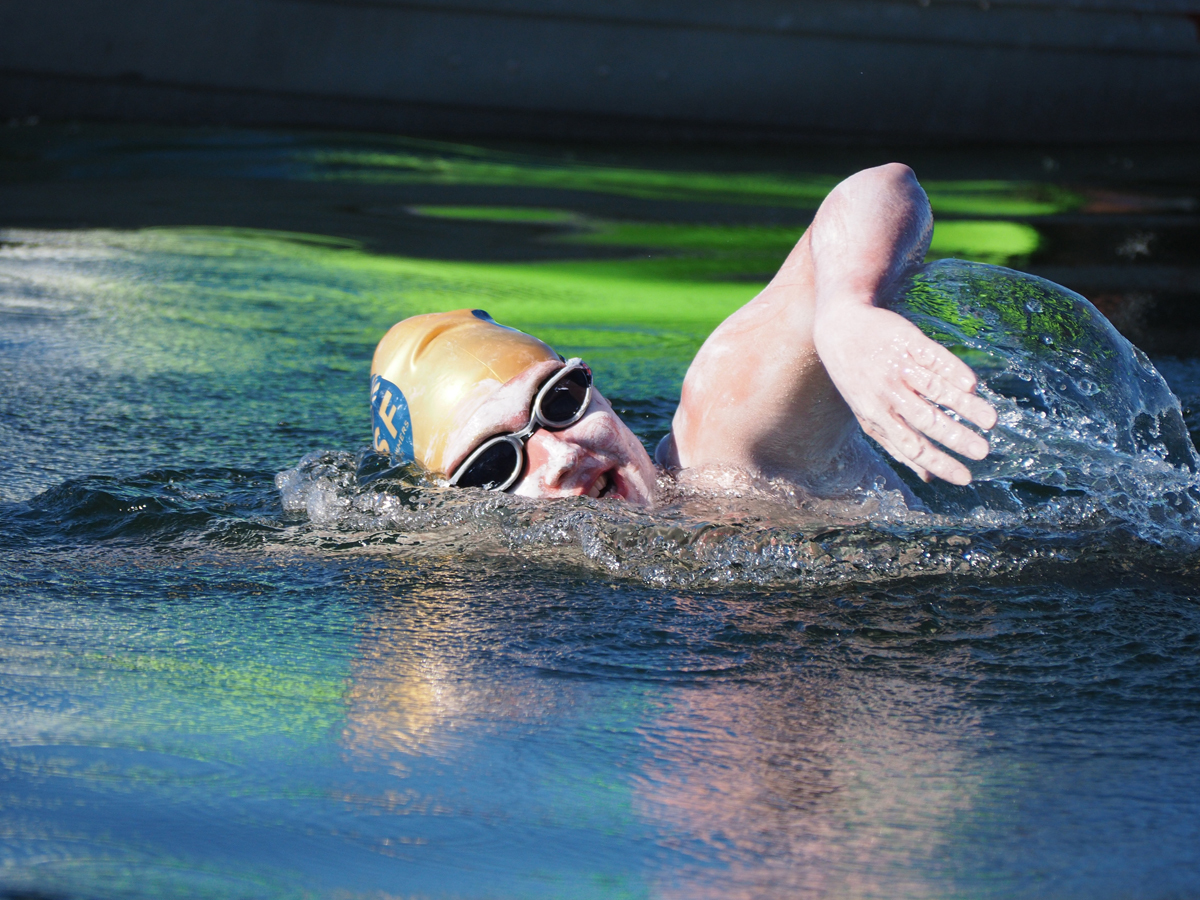
How did you keep awake for so long?
On the second night, we mixed small amounts of caffeine in with my feeds, and it was enough to keep me sharp and focused through that second night. My crew remarked that I seemed more awake/alert than they were at times.
What was your fuelling strategy?
I use CarboPro for my fueling needs. I take just over 200 calories/hour, mixed with apple juice or electrolytes, and a small amount of protein. I use liquid infant ibuprofen mixed into my feeds every 6 hours for pain. On the second night, I used an electrolyte product with caffeine in it. Also, after about 30 hours, I mixed in a few solids here and there as needed – carrots, cookies, and risotto. I’d never had risotto on a swim before, but I started to crave it on the second day, knowing we had some on the boat. It did the trick to help keep me warm and give me something solid in my stomach.
Were you able to take in the spectacular Lake Powell landscape as you swam?
I was able to enjoy it. Though, I will admit, I appreciated it more on the way home from the boat than I did while I was swimming. The first night was so clear I was able to see shooting stars through my goggles.
Marathon swimming has a high level of female participation and is a sport that women seem to excel at. Why do you think that is?
There is a lot of debate about why women tend to excel at marathon swimming and I’m not sure if I have the answer. I just know that women are tough, and I love seeing other women out there accomplishing great things.
How did you first get into open water swimming?
I joined a masters team after I graduated from college. A large group of people were training for one of our local 10k races and I just sorta thought, “Hey, that sounds like fun!” So, I signed up and absolutely loved it. I did my first 10k in 2007 and really felt like I’d found my calling. After a few years at the 10k distance, I started to wonder if I could go farther, which lead to my Catalina swim in 2010. I enjoyed that and just haven’t stopped since!
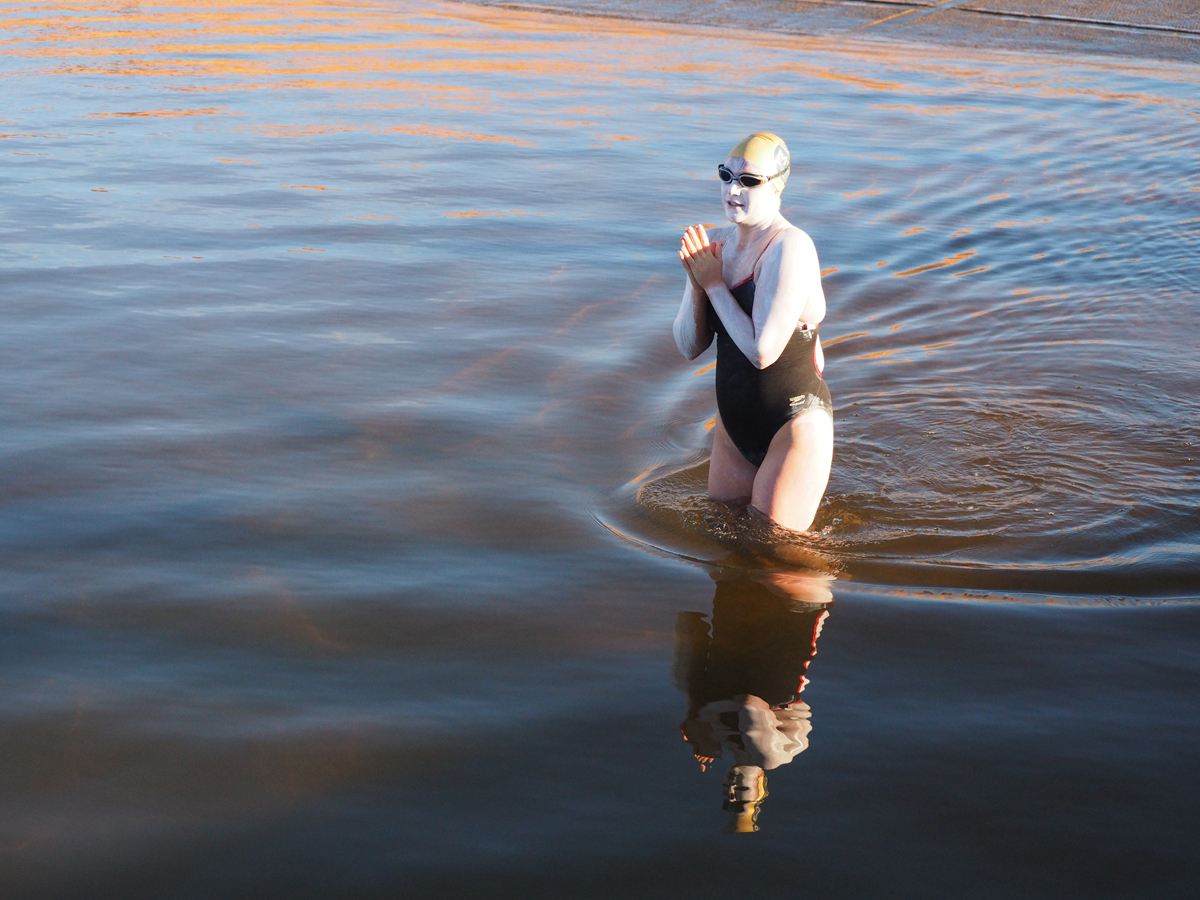
What does open water swimming mean to you?
Open water is where I truly feel at peace and at home. I’m clumsy on land, and swimming allows me to exercise and excel. I’ve never been a fast swimmer, and have always joked that I may not be fast, but I can probably out-distance pretty much everyone. Also, I’ve made so many amazing friends through this sport – it’s brought a lot of pain and heartache over the years (and cost a lot of money!), but the relationships and experiences I’ve had because of it are absolutely priceless.
What do you see as your central strength as a marathon swimmer?
I’m good at training – I enjoy it. Being able to physically and mentally handle hard training is what makes me able to succeed at long distances.
What is your next challenge?
No idea! Cook Strait in 2019, for sure. But next – I haven’t decided yet. I usually get really bored in the winter, which is when I start to concoct plans for the next summer.
Describe swimming 80 miles in three words.
It was an impossibly beautiful adventure.
Photos: Ken Classen





